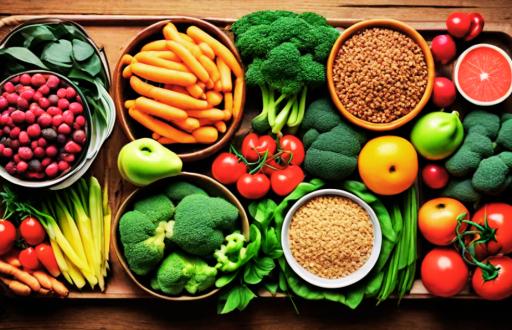How to Develop Healthy Eating Habits: A Complete Guide
The pursuit of healthy eating habits can often feel like navigating a dense, uncharted forest. A labyrinth of conflicting advice, fad diets promising miraculous results, and the constant bombardment of tempting, processed foods can leave anyone feeling lost and overwhelmed.
However, establishing a sustainable, healthy relationship with food isn’t about restrictive diets or fleeting trends. It’s about cultivating a mindful, informed approach to nourishment, building a foundation of consistent, positive choices that contribute to long-term well-being.
This comprehensive guide serves as your compass and map, providing the essential tools and strategies to navigate this journey successfully, one delicious and nutritious step at a time.

Understanding the Nutritional Landscape:
At the heart of healthy eating lies a fundamental understanding of balanced nutrition. This isn’t simply a matter of counting calories; it’s about recognizing the intricate interplay of macronutrients and micronutrients that fuel our bodies.
Picture your plate as an artist’s palette, each color representing a vital nutrient. Lean proteins, such as grilled salmon, chicken breast, or lentils, provide the essential amino acids necessary for building and repairing tissues. Complex carbohydrates, found in whole grains like quinoa, brown rice, and oats, offer a sustained release of energy, preventing the energy crashes associated with refined sugars.
Healthy fats, present in avocados, nuts, seeds, and olive oil, are crucial for cell function, hormone production, and nutrient absorption. This carefully orchestrated balance of nutrients is the symphony that keeps our bodies functioning at their peak, impacting everything from energy levels and mood to immune function and long-term health.
The Power of Planning and Preparation:
In today’s fast-paced world, convenience often trumps conscious choice. When hunger strikes unexpectedly, the allure of readily available processed snacks and fast food can be overwhelming.
This is where the strategic advantage of meal planning comes into play. By dedicating time to plan and prepare meals in advance, even for just a few days, you gain control over your dietary intake.
You become the architect of your meals, choosing fresh, whole ingredients and avoiding the hidden sugars, unhealthy fats, and excessive sodium often found in processed foods.
Meal prepping not only saves time during busy weekdays but also reduces the temptation to make impulsive, less nutritious food choices. This proactive approach transforms your kitchen into a sanctuary of healthy options, empowering you to make informed decisions about what you consume.
Mindful Eating: Cultivating a Deeper Connection with Food:
In our modern, multitasking world, meals are often consumed on autopilot, with little attention paid to the actual experience of eating.
We rush through our meals, distracted by screens and other stimuli, barely registering the taste, texture, or aroma of our food. Mindful eating encourages us to slow down, to savor each bite, and to tune into our body’s internal hunger and fullness cues.
It’s about being present in the moment, appreciating the nourishment we are providing our bodies, and recognizing the signals our bodies send us. This practice fosters a healthier relationship with food, preventing overeating, promoting better digestion, and transforming eating from a rushed chore into a conscious and enjoyable experience.
Hydration: The Elixir of Life:
Often overlooked amidst discussions of diet and nutrition is the crucial role of hydration. Water is essential for countless bodily functions, from regulating body temperature and transporting nutrients to flushing out toxins and supporting digestion.
Many times, we mistake thirst for hunger, leading to unnecessary snacking and calorie consumption. Keeping a water bottle readily available and sipping throughout the day can not only improve hydration but also help manage appetite and promote a feeling of fullness.
Navigating the Challenges and Embracing Sustainability:
The journey towards developing healthy eating habits is rarely a straight line. There will be challenges, setbacks, and moments of temptation. It’s important to remember that progress, not perfection, is the goal. Be patient with yourself, celebrate small victories, and view setbacks as learning opportunities rather than failures.
The key is to create sustainable changes that you can maintain over the long term, rather than striving for unrealistic, short-lived restrictions. This involves finding a balance that works for you, incorporating your favorite foods in moderation, and making gradual adjustments to your eating patterns.
The Importance of Variety and Moderation:
A cornerstone of healthy eating is embracing variety. Consuming a wide range of fruits, vegetables, whole grains, lean proteins, and healthy fats ensures that your body receives a diverse spectrum of nutrients. This also helps prevent boredom and makes healthy eating more enjoyable. Equally important is the concept of moderation.
Completely restricting yourself from your favorite treats can often lead to cravings and unhealthy eating patterns. Allowing yourself occasional indulgences in moderation can help you maintain a balanced approach and prevent feelings of deprivation.
Seeking Support and Guidance:
Embarking on a journey towards healthier eating can be even more rewarding with the support of others. Consider connecting with a registered dietitian or nutritionist who can provide personalized guidance and support based on your individual needs and goals. Joining a support group or finding a healthy eating buddy can also provide valuable encouragement and accountability.
Conclusion:
Developing healthy eating habits is a multifaceted and ongoing process that requires a combination of knowledge, planning, mindfulness, and self-compassion. It’s about making conscious choices that support your overall well-being and contribute to a healthier, happier you.
By embracing the principles outlined in this guide and adopting a patient and persistent approach, you can transform your relationship with food and cultivate a sustainable lifestyle that nourishes your body and mind.
FAQ:
What are some practical tips for incorporating more fruits and vegetables into my diet?
Keep pre-cut fruits and vegetables readily available in your refrigerator for easy snacking. Add vegetables to your favorite dishes, such as omelets, soups, and pasta sauces. Blend fruits and vegetables into smoothies for a quick and nutritious meal or snack.
How can I make healthier choices when eating out?
Choose restaurants that offer grilled or baked options instead of fried foods. Opt for salads with light dressings and ask for sauces on the side. Be mindful of portion sizes and consider sharing an entree or taking leftovers home.
What are some strategies for managing cravings?
Identify the triggers that lead to cravings and develop strategies for coping with them. This might involve finding healthy substitutes for your favorite treats, engaging in physical activity, or practicing stress-management techniques.
How can I involve my family in healthy eating?
Make healthy eating a family affair by involving everyone in meal planning and preparation. Introduce new foods gradually and make mealtimes a positive and enjoyable experience.
What are some resources for learning more about healthy eating?
Reputable sources include the Academy of Nutrition and Dietetics, the USDA MyPlate website, and the National Institutes of Health. Consulting with a registered dietitian or nutritionist can also provide personalized guidance.






